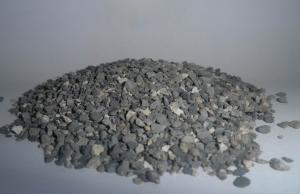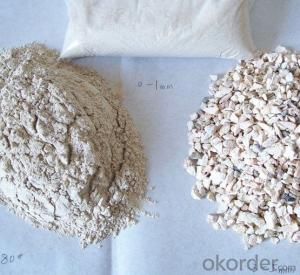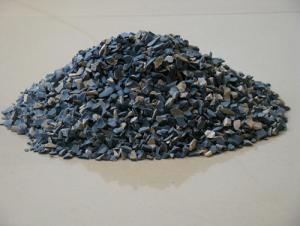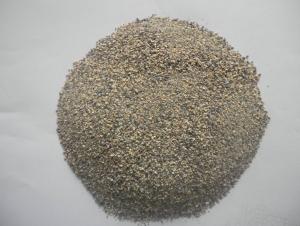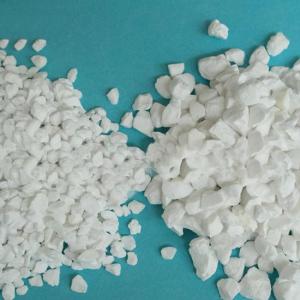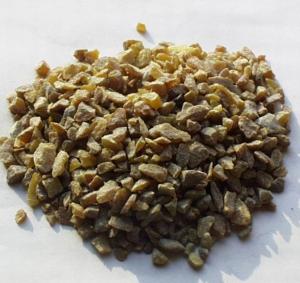Raw Materials for Refractory:Black/Green Silicon Carbide Abrasive & Refractory Grade
- Loading Port:
- China main port
- Payment Terms:
- TT OR LC
- Min Order Qty:
- 25 m.t.
- Supply Capability:
- 2000 m.t./month
OKorder Service Pledge
OKorder Financial Service
You Might Also Like
Quick Details
| Place of Origin: | Shanghai, China (Mainland), Shanghai China (Mainland) | Brand Name: | CNBM | Model Number: | sy1479 |
| Material: | SiC | Usage: | abrasive/metallurgical deoxidizer | Abrasive Grain Sizes: | 16#24#30#36#46#60#80#100#120#150#180#200#325#, 1180-1000u |
| color: | black,green | shape: | lump, briquette,powder | sample: | free |
| SiC: | min97 | Bulk density: | 1.45-1.56 g/m³ | Composition%: | SiO≥95% F. C≤0.3% Fe2O3≤1.2% |
| Proportion: | 3:2 |
Packaging & Delivery
| Packaging Details: | 25kg poly woven bag with inner lining, 500kg jumbo bag, two jumbo bag palletized in a pallet.Other package requirement on request. |
| Delivery Detail: | Within 7 days after receiving the deposit. |
Specifications
Black Silicon Carbide For Abrasive & Refractory
1.High purity
2.Corrosion resistance
3.Good suitability
4.High hardness


Description
Silicon carbide (SiC) is made from quartz sand and petroleum coke( or coal tar), wood chips as raw material through high temperature smelting in electric resistance furnace.
Applications
1.metallurgical deoxidizer
2.high temperature resistant materials
3.as abrasive, abrasive tools can be used to such as grinding wheels, whetstones, grinding head, sand tile etc
Advantages
1. corrosion resistance, high strength, high hardness,
2.good wear-resisting performance,resist to shock
3.stable chemical performance, high thermal conductivity, high resistant temperature
- Q: Do you know what the main indicators are for the inspection of refractory materials? Thank you very much for your requests and reports
- The main indicators of refractory material inspection must be fire resistance materials, flame retardant, a subdivision of lecture, ignite the smoke toxicity, smoke density, heat release and flue gas;
- Q: What is the difference in the nature between the refractory material and thermal?insulation?material
- thermal?insulation?material is used to thermal insulation and the transfer of heat insulation. refractory material is defined as greater than 1580 ° non-metallic materials, such as calcium silicate board. its using temperature can reach to 1100 degrees, and some can also be used at high temperatures, and all high-temperature industrial can't be oprated without it, and the using temperature of polycrystalline alumina fibers can reach to 1800 degrees
- Q: What are the basic requirements of continuous casting for molten steel? What are the requirements for refractory materials?
- The rapid development of the technology of continuous casting refractories so the corresponding development and improvement in variety and quality, continuous development of refractories for the continuous casting billet continuous casting production and quality have a significant impact. Especially, the completion and operation of Baosteel have greatly promoted the technological progress of refractory materials in China, and the refractory materials for continuous casting have made great progress both in variety and in quality.
- Q: What's the definition of fire endurance of the fire-resistant coating for steel structure?
- Fire endurance (h): Under the condition of standard fire resistance test, the time when the building components, accessories, or structure is subjected to fire to the time when they loose stability, integrality or thermal insulation is called fire endurance which is showed in time. Steel is the kind of building material that is nonflammable with many properties of seismic resistance and bending resistance. In practical applications, steel can improve the load capacity of buildings in a relative way, meet the needs of buildings design, beauty and mould, and it can also avoid the defects of poor flexibility and tensile strength of buliding materials like concrete. Therefore, steel is quite popular in the construction industry, and it is widely used in single-story or multi-storey skyscrapers, plants, warehouses, waiting rooms and airport terminals, etc. However, as a kind of building material, it has some unavoidable defects in fire prevention. That is its mechanical properties like yield point, tensil strength and elasticity modulus will decrease dramatically with the rise of the temperature.
- Q: Which refractory quality inspection authority is good?
- Research Institue of Refractory Materials in Luoyang, Henan Some of our samples are made there.
- Q: Ask some questions about refractories
- The main chemical composition of Al2O3 = 75%, Al2O3 = 89%Bulk density g/M3 2.9 3.15Reheating linear change rate 1450 C -0.10 +0.01Apparent porosity% 1917Compressive strength MPa 2228Flexural strength MPa 810Refractoriness 21002150 DEG C
- Q: What is the offer of fire proofing thermal insulation material?
- The following prices are from the Internet and for your reference only. Hainan fire proofing thermal insulation material ceramic fiber paper aluminum silicate fiber blanket/aluminum oxide fiber insulation cotton insulation pipe 12 yuan Hainan multicrystal mullite/calcium silicate corundum ceramic fiber loose wool short fiber fire proofing thermal insulation material non-asbestos high temperature resistant aluminum silicate fiber insulation cotton fire-resistant material ceramic fiber blanket thermal insulation blanket 28 yuan non-asbestos high temperature resistant aluminum silicate fiber ceramic fiber blanket needled felts insulation blanket fire resistant material thermal insulation cotton blanket reference price: 59 yuan
- Q: What are the characteristics of clay refractory materials?
- Refractory clay refers to the refractory clay and bauxite, whose refractoriness is over 1580℃, which can be used as refractory materials. Apart from high refractoriness, they can maintain stability of volume under high temperature conditions and has resistance to slag, the sudden cold and hot, and mechanical strength, so after calcination, it can be abnormal firm.
- Q: how does the fire endurance of first rate fire resistant window?
- how does the fire endurance of first rate fire resistant window? I really don't know it and I need a specific direct and detailed answer!
- Q: What types does refractory floor include?
- The categories of refractory are: 1. the best overall performance stone flooring (waterproof, fire retardant) The full name is microcrystalline stone flooring. It is a high-performance waterproof and fire-retardant environmental wood floor synthesized with high and new technology. Its unique raw material is ground calcium carbonate micro-crystalline polymer stone with natural resin and other twenty more imported spreadings. It is formed by refining with high temperature (300 degree centigrade) and high pressure (9,000kg). It is an environmental healthing high-performance material. Its product is innocuous and unpoisonous, and won't age, deform, fade while it is fire retardant, waterproof, maintenance-free and quality, so it is an inevitable repalcement with traditional wood floor. This product has been confirmed as national key promotion program. 2. Wear-resistant composite solid wood floor It is also known as super wear-resistant multi-layer solid wood floor. First stiffening layer surface (based on inorganic materials and steel fibers for paper impregnated with thermosetting amino resin with solid wood or plywood blockboard substrate surface as a combination of facing layer), the front is wear-resistant layer, and the back is balance layer. Thtough hot pressing, it is a grooved and tongued floor, a new impregnated paper laminate floor. It also has the same wear-resistant quality as laminate floor, beauty and foot feel as solid wood floor, stable structure as solid wood composite floor, etc. 3. Waterproof plastic wood floor Plastic wood (also known as "wood plastic" or "plastic wood") composites, and the English name is WOOD-PLASTIC-COMPOSITES, WPC for short.
Send your message to us
Raw Materials for Refractory:Black/Green Silicon Carbide Abrasive & Refractory Grade
- Loading Port:
- China main port
- Payment Terms:
- TT OR LC
- Min Order Qty:
- 25 m.t.
- Supply Capability:
- 2000 m.t./month
OKorder Service Pledge
OKorder Financial Service
Similar products
Hot products
Hot Searches
Related keywords





